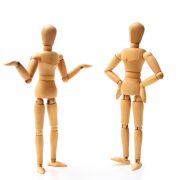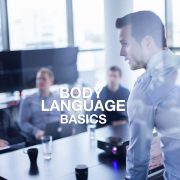What Are Micro Expressions? | Body Language
What Are Micro Expressions? | Body Language
So recently micro expressions have exploded in popularity. Mainly due to the show “Lie To Me” which is grounded in Paul Ekman’s research. Let me explain what they are.
Now most facial expressions last more than a second. So you’re not exhibiting micro expressions all the time. But sometimes you’re exhibiting what’s called micro expressions. And micro expressions are these slips. You don’t want the person to see them. And thy’re these fraction of a second facial expressions that happen as a result of a slip. Unintentionally. You unintentionally display how you are truly feeling.
So usually how micro expression relates to lie detection is you’re looking for an inconsistency or a discrepancy. So all of a sudden a woman is talking about how she’s so sad that her daughter just died and all of a sudden you see a slight smile. Alright. That’s an inconsistency. A mother shouldn’t be upset about her daughter dying. That kind of leads you to believe they’re not really being truthful.
Now this is how micro expressions work. So Paul Ekman originally did research on the six universal facial expressions which I’m going to cover in later videos. There are six facial expressions that no matter where you go in the world, everybody thinks they mean the same thing. So for example, a smile. You can go to the most remote villages in the world and when somebody smiles they’ll say that this person is happy. That this person likes this behavior. So on and so forth.
So the cool thing about micro expressions are they’re universal. Something that people don’t understand, micro expressions, you’re not walking down the street and being like. “Micro expressions.” You can’t see them. They happen so quickly that you’re only processing these unconsciously. Right? Some people don’t even display micro expressions. There’s some people that don’t display them. There’s some people that do. And the theory is that through training you can get better at identifying people emotions through constant exposure to these micro expressions. But they happen very, very, very quickly.
The only way you can really point to a micro expression is if you have people on video camera. If you have people on video camera, you can look at things frame by frame by frame. And I can point to a micro expression. “Look, there’s a micro expression.” But when you’re in real time, that’s not necessarily how it works and I think there’s a confusion for most people who watch this show. They’re like, “Oh, I can look for micro expressions,” when you’re having a conversation with somebody. No.
But you can look for facial expressions. Why I think that it’s so important to really pay attention to micros or train for it, is because training for micro expressions, training to look for facial expressions that last 1/25th of a second or last very, very quickly is going to help you identify facial expressions when they happen much slower.
So some people show surprise and some people show contempt and some people show happiness at a slower rate. It doesn’t need to be a micro expression. So it’s just training to get better at identifying emotions.










